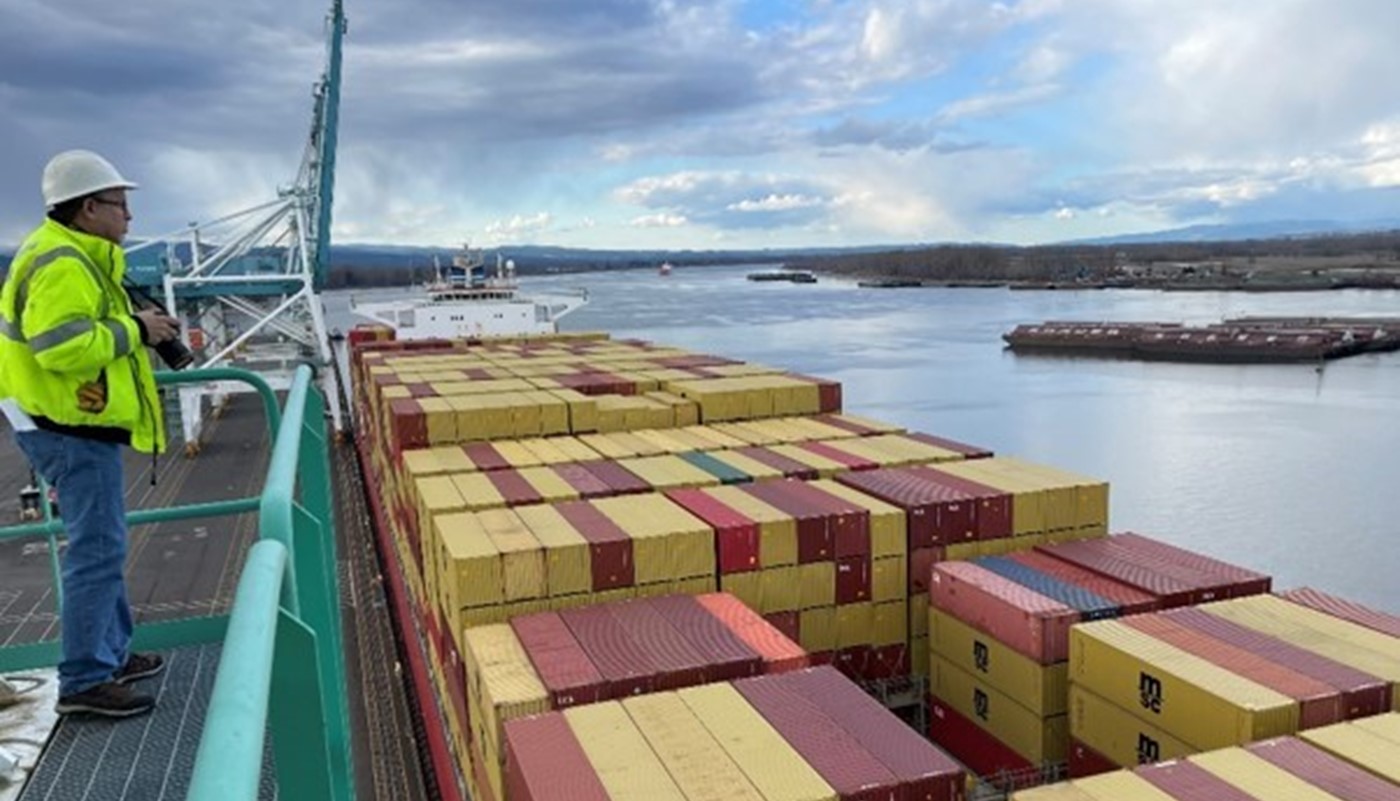Port Brings Together Shipping Community to Discuss Container Service Challenges

March 21, 2024 — This week, the Port of Portland wrapped up a series of shipping community conversations about challenges with container shipping and next steps at Terminal 6, Oregon’s only international shipping container terminal. The meetings highlighted the challenges of maintaining container operations and the needs and priorities of the shipping community, to inform the Port’s ongoing efforts to find a financially sustainable solution for maintaining container operations in the short and long term.
Container operations at T6 connect the world with the state’s consumers and industries, including agriculture, seafood and retail. While T6 also handles a thriving automobile import and export business, along with shipping break bulk and other large, heavy cargo, the fixed costs of container services have made it very difficult for the Port to incrementally rebuild the business after the departure in 2017 of ICTSI, the prior terminal operator, who was embroiled in labor disputes.
As a result, while volumes have steadily increased since 2019, the Port has endured losses of more than $30 million from container operations over the past three years, including a projected $14 million shortfall in the current fiscal year and is seeking state support to bridge to a more sustainable long-term solution.
The Port has been working with importers and exporters throughout Oregon, lawmakers and other partners to find a financially sustainable path forward for this critical service through a long-term, third-party lease, while negotiating higher rates with ocean carriers and requesting an $8 million investment from the Oregon Legislature to enable container operations to continue while a lease is pursued.
“We know container shipping services are important for small businesses across Oregon, and that they offer economic benefits for the region and a strategic advantage to the state,” Chief Trade and Economic Development Officer Keith Leavitt said. “It was important for us to meet with our partners in the shipping community and other stakeholders so we could share updates and hear their questions and concerns.”
More than 200 people attended the Port’s meetings, which were hosted in locations across the state, including in Albany on March 12, Boardman on March 14, Aurora on March 18, and Portland on March 19.
Although container shipping provides important benefits for small businesses and the regional and state economies, the terminal faces a number of unique challenges, including its distance 100 miles from the ocean, the region’s relatively small consumer market (to draw imports) compared to other West Coast cities like Los Angeles and Seattle, and the Columbia River’s limited depth to accommodate the largest ships in the shipping industry. While T6 achieved strong growth throughout the pandemic, challenges have emerged more recently, such as the loss of a rail service partner, BNSF, which would have offered a sustainable revenue stream.
Shippers have raised questions about the cost of alternate arrangements, such as trucking goods to ports in other states, which makes Oregon companies less competitive. They also raised questions about service issues involving carriers that call at T6, and some spoke to broader financial struggles faced in agricultural industries such as hay. Importers and exporters alike spoke to the need for certainty before May, when contracts for services in the coming year are usually finalized.
Leavitt said the Port will continue doing everything possible to maintain container services while working with the community every step of the way.
“Our immediate priority is to keep the terminal operating while we secure a long-term lease with a third-party terminal operating partner, particularly one who can help bring the volume of shipments needed for this operation to be a success,” he said. “This model, used by other international container terminals up and down the West Coast, would offer the financial sustainability needed to continue serving Oregon’s container shipping community long-term.”
Container operations at T6 generate $20 million annually in tax revenue to the State of Oregon and provide 1,500 jobs in international cargo operations. Leavitt said he is hopeful the state will agree to support this critical service.
“The bottom line is we know these services are important to many people in our state, and we’re doing everything possible to make them viable, including working with state legislators and the governor’s office on our $8 million request,” Leavitt said. “We appreciate everyone’s help, patience and support.”
#####





